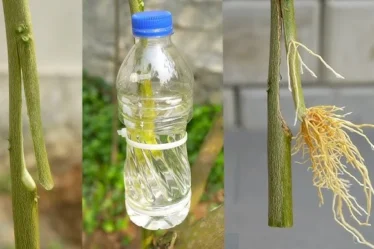
Potatoes are a hardy and essential crop for any home gardener, but their growth can be negatively impacted by the plants they share space with. Certain companions may compete for resources, introduce diseases, or attract pests that threaten potato health. Knowing which plants to avoid can help you maintain a thriving potato garden. Here’s a guide to seven plants that should not be planted near potatoes, along with the reasons behind this advice.
1. Tomatoes
Why to Avoid: Both tomatoes and potatoes belong to the nightshade family and share vulnerabilities to diseases like blight.
Impact: Planting tomatoes close to potatoes heightens the risk of blight transmission, jeopardizing both crops. For more information, check out plants to avoid near tomatoes.
2. Pumpkins
Why to Avoid: Pumpkins, along with other cucurbits, attract pests like cucumber beetles that can also harm potatoes and spread bacterial wilt.
Impact: These pests can migrate from pumpkins to potatoes, leading to severe damage and crop loss.
3. Sunflowers
Why to Avoid: Sunflowers tend to draw in aphids and other pests that can transmit viruses harmful to potato plants.
Impact: The presence of sunflowers may increase the likelihood of pest infestations in your potato crop.
4. Cucumbers
Why to Avoid: Similar to pumpkins, cucumbers can harbor bacterial wilt and other diseases that can affect potatoes.
Impact: Cucumbers can create conditions that favor the spread of diseases detrimental to potato health. For more tips, see plants to avoid near cucumbers.
5. Raspberries
Why to Avoid: Raspberries can host Verticillium wilt, a soil-borne fungus that can also infect potatoes.
Impact: This fungus can linger in the soil and lead to wilt in potato plants, reducing yields.
6. Apples
Why to Avoid: Apple trees can alter soil acidity, potentially creating conditions that are unfavorable for potatoes, which thrive in slightly acidic to neutral pH levels.
Impact: Changes in soil pH can hinder potato growth and affect tuber formation.
7. Carrots
Why to Avoid: Carrots compete with potatoes for essential nutrients, particularly in nutrient-poor soil.
Impact: This competition can result in reduced yields and smaller tubers, as both plants vie for the same resources.
Best Practices for Planting Near Potatoes
- Companion Planting: Consider growing beans, corn, and cabbage alongside potatoes; these plants are known to complement each other.
- Proper Spacing: Maintain adequate distance between your potato plants and potential competitors to minimize resource competition and disease risk.
- Soil Health: Regularly enrich your soil with compost to keep it nutrient-rich and conducive to healthy potato growth.
- Pest and Disease Management: Implement crop rotation and use natural pest deterrents to lower the risk of diseases and pests in your potato garden.
Cultivating a Productive Potato Garden
By carefully selecting companion plants for your potatoes, you can avoid many common problems that could otherwise hinder your garden’s success. Steer clear of these seven plants to help your potatoes flourish and secure a plentiful harvest. For further insights, explore plants to avoid near your pepper plants.


